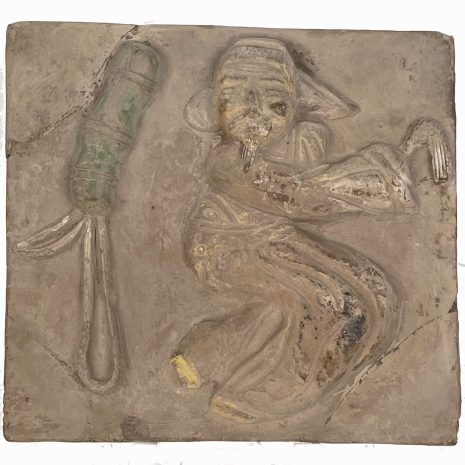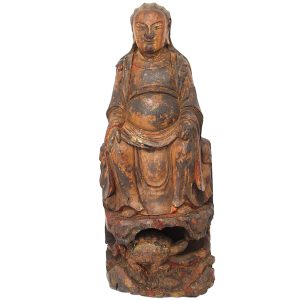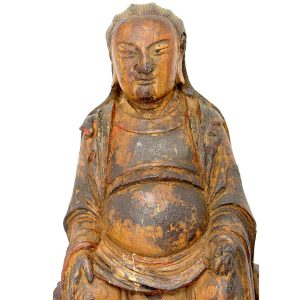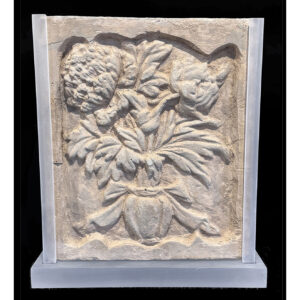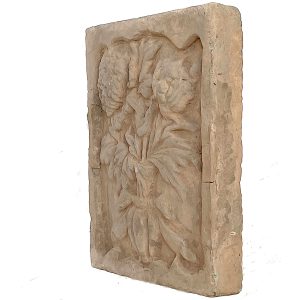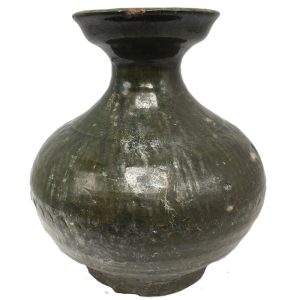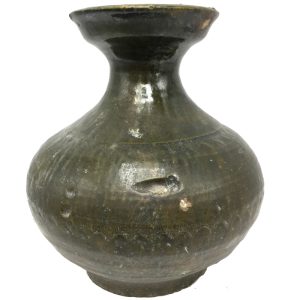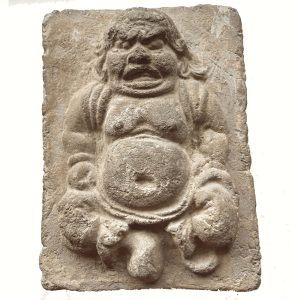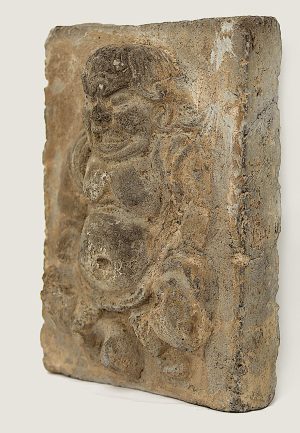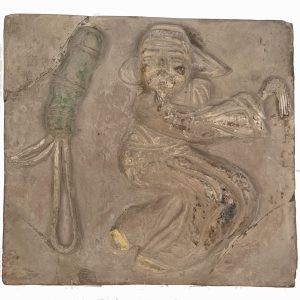Song Dynbasty Tile of Immortal with Firecracker, China (5515LEM) $495
$495.00
H: 7” W: 5” D: 2.75” | FREE SHIPPING
This Song earthenware tile depicts the legendary scholar, poet and alchemist Taoist deity Lu Dongbin, one of the Eight Immortals, who sought to discover the elixir of immortality and used charms still used in Chinese homes to prevent illness and ward off evil. He and his fly whisk are auspicious symbols of longevity and a wish for immortality.
Description
During the Song dynasty, mold made unglazed earthenware brick tiles decorated the doors and walls of the government, private religious buildings as well as the doors and tomb walls of the rich used as funerary decorations (mingqi) to wish the deceased happiness and comfort in their afterlife. This thin brick presents two images. The figure on the right is the legendary scholar, poet, and Immortal Lu Tung Ping who lived during the Tang dynasty. A Taoist deity and master of alchemy, he pursued the elixir of life to deliver immortality and became one of the Taoist Eight Immortals. Usually depicted as a scholar, his appearance funerary tile is appropriate, as any image of an immortal and the object they carry, like this fly whisk, are symbols of long life and a wish for immortality. He is accompanied by a huge firecracker used for centuries to scare away evil spirits with their loud sound and to elicit happiness and prosperity. Firecrackers, traditionally used to celebrate the Chinese New Year, usher in wishes for a safe and prosperous year also scare away evil and provides pleasure for the ancestors’ spirit. Originally covered in a white slip and fully painted, most is lost except the green on the firecracker and yellow, grey, and brown on Lu Dongbin. This tile is in good condition for this kind of object: it is repaired in 3 corners, and has small chips upper right corner and back lower right and expected slip and paint losses. It is part of both the VA Collection of Deities-and-Legends. With a mount it would be a great wall art piece.
Additional information
| Dimensions | 12 × 9 × 6 in |
|---|---|
| Place of Origin | China |
| Period | Ancient, Song Dynasty |
| Date | 960-1127 |
| Materials and Technique | Ceramics |
| Dimensions (inches) | Ht: 7” W: 5” D: 2.75” |
| Dimensions (metric) | Ht: 17.78cm W: 12.7cm D: 7.62cm |
| Condition | Good condition with repairs, see description |
| Reference Number | 5515LEM |
| Shipping Box Size |
